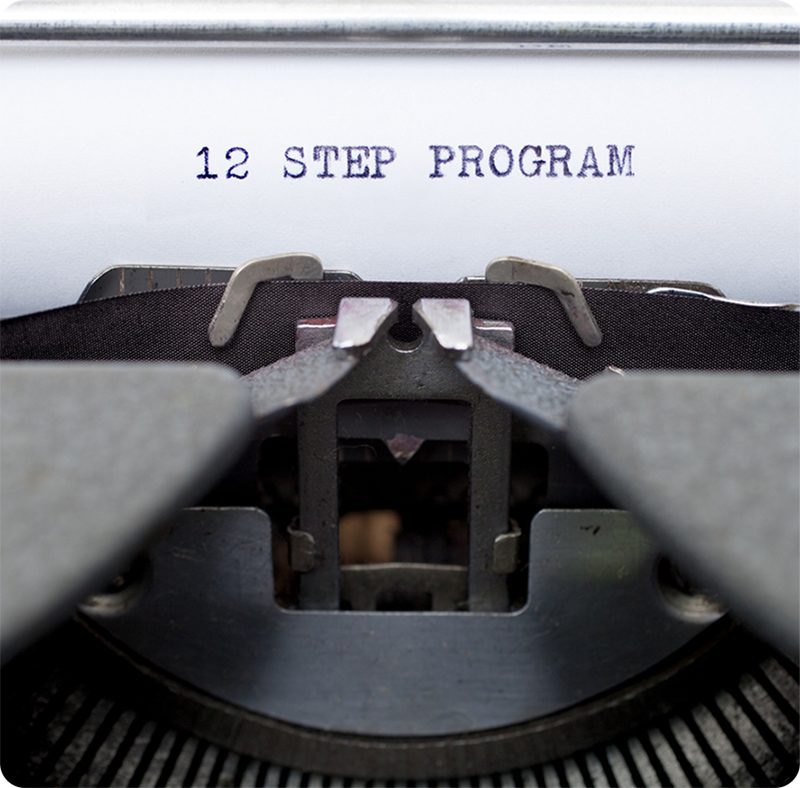We Accept Most Insurance. Please Call to Verify Yours.






![]()







The 12-Step program is a proven method for those facing substance use disorder. It provides a structured path toward recovery. At Stairway Resource Center, we believe these steps can transform lives. They help shift beliefs and behaviors to promote lasting sobriety and better mental health.
Each step guides individuals on a personal and spiritual journey. It emphasizes shifts in mental and emotional perceptions that are key to sustainable recovery. We are committed to creating an environment of support and understanding. Clients feel empowered as they embark on their healing journey.
The 12-Step program is a time-tested program designed to support individuals struggling with substance use disorder (SUD) and addiction. This structured approach encourages meaningful changes in beliefs and behaviors, setting the stage for long-term sobriety. By engaging in this spiritual and personal journey, individuals can shift their mental and emotional perceptions. This leads to a deeper understanding of their addiction and its roots.

12-Step communities play a crucial role in providing peer support and accountability for individuals in recovery. These groups encourage open sharing, enabling members to discuss the challenges they face with others who understand their struggles. This process fosters essential qualities such as humility, forgiveness, and courage, which are vital for recovery. At Stairway Resource Center, we facilitate regular group sessions and events focused on the Twelve Steps, ensuring ongoing support for our clients long after they complete their treatment program.
At Stairway Resource Center, we incorporate the Twelve Steps into our residential treatment center approach, tailoring them to each individual’s unique needs. Our experienced staff members understand the complexities of addiction and are dedicated to providing compassionate support throughout the recovery process. We believe that understanding each step is crucial for harnessing the full potential of this recovery model.
“We admitted we were powerless over alcohol — that our lives had become unmanageable.”
This initial step invites individuals to confront the truth about their addiction. Acknowledging powerlessness can be daunting but is essential for initiating meaningful change.
“We came to believe that a Power greater than ourselves could restore us to sanity.”
Hope is a crucial component of recovery. This step encourages individuals to find a higher power — whether spiritual, communal, or personal — that empowers them to progress on their journey.
“We made a decision to turn our will and our lives over to the care of God as we understood Him.”
Recognizing the need for external assistance is vital. By surrendering control, individuals can access the support they need to overcome addiction.
“We made a searching and fearless moral inventory of ourselves.”
This step challenges individuals to evaluate their lives honestly, acknowledging the harms caused by their addiction and paving the way for growth.
“We admitted to God, to ourselves, and to another human being the exact nature of our wrongs.”
By sharing their moral inventory, individuals embrace integrity and transparency, fostering healing from shame and guilt.
“We were entirely ready to have God remove all these defects of character.”
Step six is about being open to moving forward. Willingness in this step points to a your openness to learning. The defects of character identified in the moral inventory cannot be removed unless you are willing to let them go. This step often involves replacing old, harmful coping mechanisms with healthier ones.
During this step, you must also accept that recovery involves progress rather than perfection. There are no guarantees that you will be able to avoid every trigger, but you will be better equipped to handle the missteps and the subsequent repeat recovery.
“We humbly asked Him to remove our shortcomings.”
Humility allows individuals to recognize their limitations and seek support, freeing them from the burdens of their past.
“We made a list of all persons we had harmed and became willing to make amends to them all.”
Acknowledging the impact of one’s actions on others is an important step towards healing and restoring relationships.
“We made direct amends to such people wherever possible, except when to do so would injure them or others.”
Taking responsibility for past actions helps facilitate forgiveness — both from oneself and from others.
“We continued to take personal inventory and when we were wrong promptly admitted it.”
Maintaining a regular practice of self-reflection is essential for ongoing recovery and personal growth.
“We sought through prayer and meditation to improve our conscious contact with God as we understood Him.”
Intentional prayer and meditation can enhance spiritual awareness, providing guidance throughout the recovery process.
“Having had a spiritual awakening as the result of these Steps, we tried to carry this message to alcoholics, and to practice these principles in all our affairs.”
Serving others solidifies one’s recovery and contributes to a supportive community.
At Stairway Resource Center, we offer 12-Step recovery programs that are community-centered and individualized. Each staff member understands the complexities of addiction and is committed to helping clients navigate their unique paths to sobriety.
Peer support plays a significant role in the recovery process. By engaging with others who share similar experiences, individuals can develop coping strategies and build a robust support network.
Participating in group psychotherapy sessions not only enhances accountability but also helps individuals cultivate essential coping skills necessary for long-term recovery.
A 12-Step program is a peer-based support system designed to help individuals overcome various addictive behaviors, including alcohol and drug abuse. These programs emphasize anonymity and community, providing a safe space for individuals to share their experiences and support one another in their recovery journeys.
There are numerous 12-Step programs tailored to specific addictions and compulsive behaviors. Some focus on substance use, like Alcoholics Anonymous (AA) and Narcotics Anonymous (NA), while others address issues such as food addiction (Overeaters Anonymous) or codependency (Codependents Anonymous).
Anyone seeking to achieve or maintain sobriety can benefit from a 12-Step program. Regular attendance and participation significantly enhance the likelihood of successful recovery.
No, 12-Step programs are peer-led. While they may incorporate insights from professionals, the foundation relies on shared experiences and mutual support.
No, there is no time limit for 12-Step programs. Many individuals continue to attend meetings long after completing the steps, finding ongoing support and community connection essential for maintaining sobriety.